The Intel SSD 760p 512GB Review: Mainstream NVMe Done Right
by Billy Tallis on January 23, 2018 11:30 AM ESTAnandTech Storage Bench - Light
Our Light storage test has relatively more sequential accesses and lower queue depths than The Destroyer or the Heavy test, and it's by far the shortest test overall. It's based largely on applications that aren't highly dependent on storage performance, so this is a test more of application launch times and file load times. This test can be seen as the sum of all the little delays in daily usage, but with the idle times trimmed to 25ms it takes less than half an hour to run. Details of the Light test can be found here. As with the ATSB Heavy test, this test is run with the drive both freshly erased and empty, and after filling the drive with sequential writes.
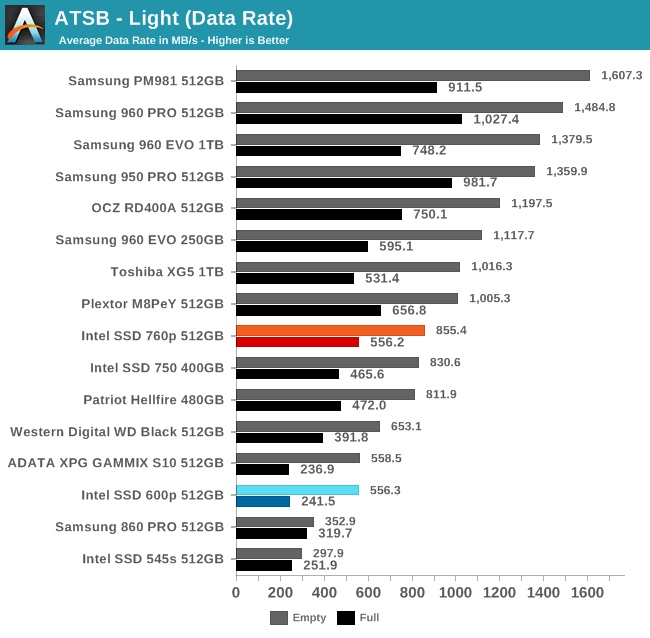
The Light test reveals bigger performance differences for full and empty drive states than the Heavy test, but the 760p doesn't suffer as much as most drives. The average data rates from the 760p are slightly higher than from the Intel SSD 750, and much higher than the 600p or the SATA drives. On the other hand, the TLC-based Samsung PM981 is almost twice as fast.
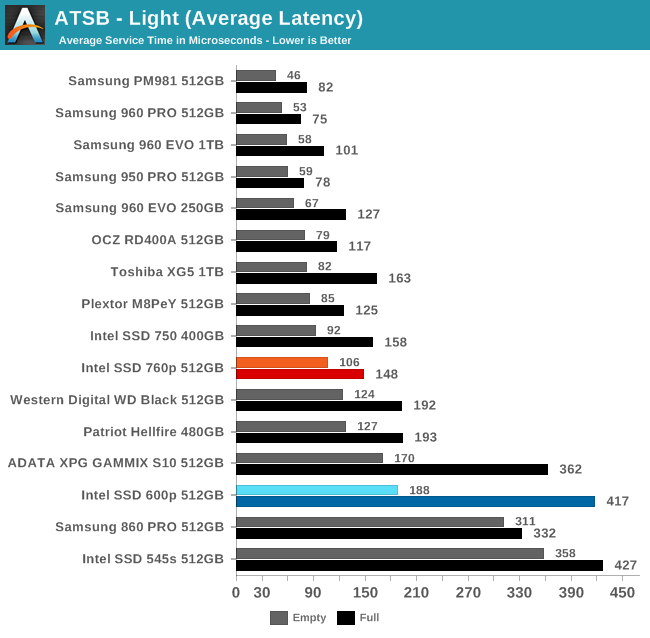
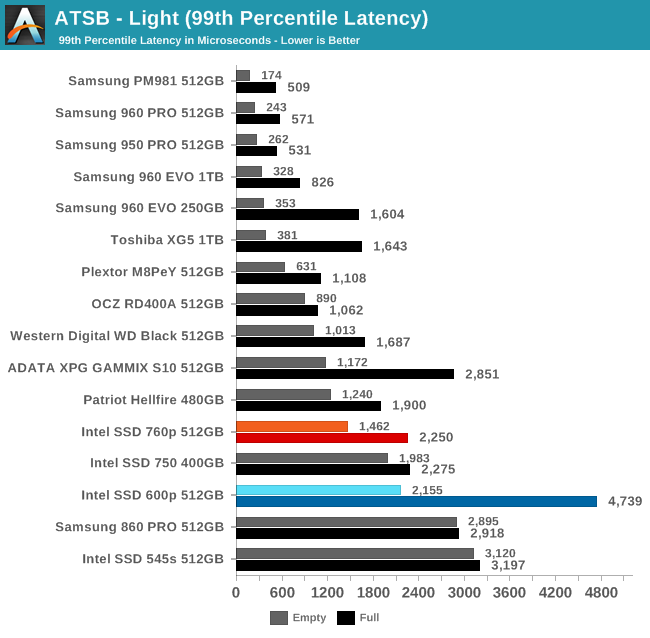
The average latency scores of the Intel SSD 760p are twice those of the fastest NVMe SSDs, but this isn't enough to amount to a noticeable difference on a light workload. The 99th percentile latencies are much higher than those of Samsung's NVMe drives, but are still faster than SATA SSDs.
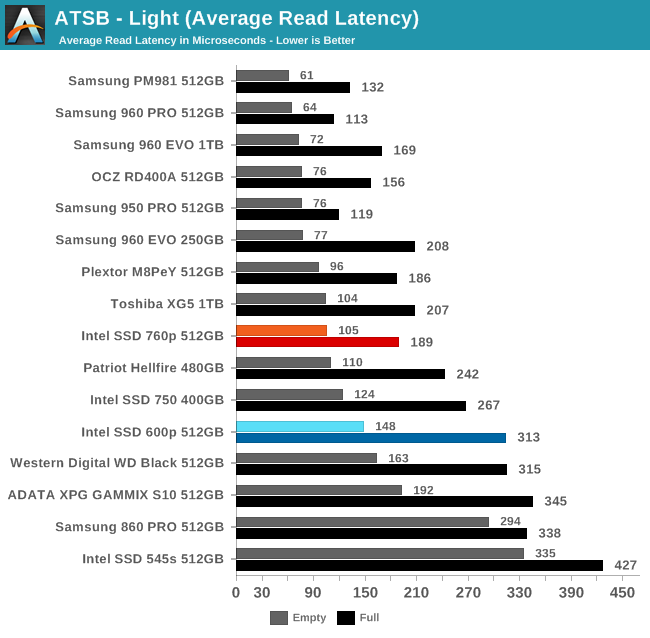

The average read latencies from the Intel 760p fall into the middle of the range for NVMe SSDs, but the average write latencies are clearly on the high side of normal.
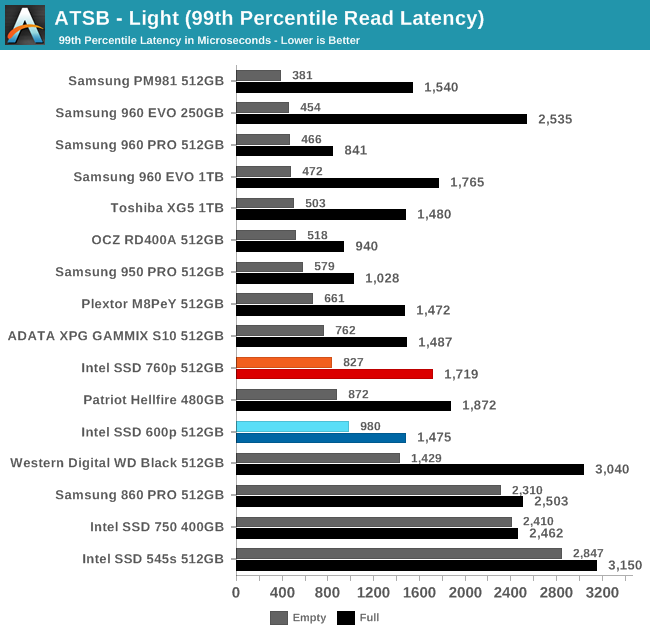
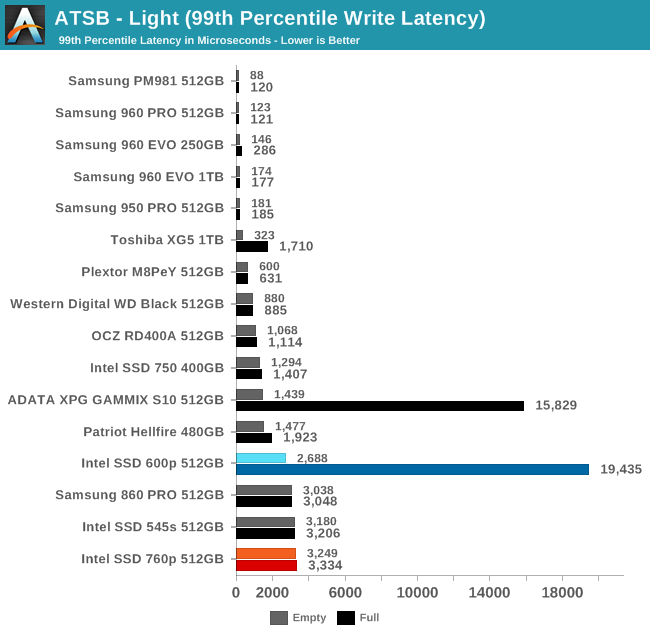
The 99th percentile read latencies of the 760p on the Light test are acceptable for a low-end NVMe SSD, but the full-drive score is actually slightly worse than the Intel 600p. On the write side, the 99th percentile latency is actually very slightly worse than good SATA SSDs, but the 760p doesn't get noticeably worse when full.
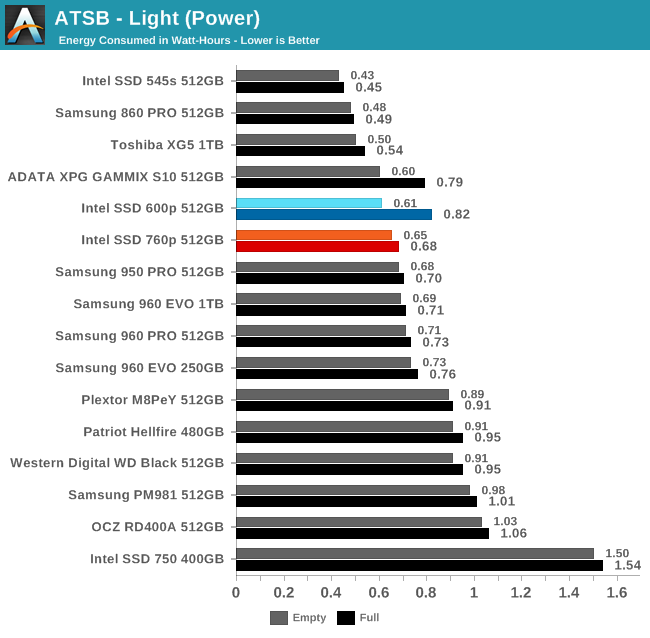
The two SM2260-based NVMe SSDs join the Toshiba XG5 this time as the most efficient NVMe SSDs ahead of the Intel 760p, but the SM2260-based 600p and GAMMIX S10 fall behind when the test is run on a full drive. The Samsung drives mostly use slightly more power than the 760p, but the PM981 ends up near the bottom of the chart.










51 Comments
View All Comments
Dr. Swag - Tuesday, January 23, 2018 - link
What happened to your performance consistency tests?ImSpartacus - Wednesday, January 24, 2018 - link
I'm glad I wasn't the only one that noticed them missing.I'd love to get a comment on why that is omitted.
SleepyFE - Saturday, January 27, 2018 - link
Just assume it's not consistent enough to measure up. It is an Intel product after all. If they don't won't it published it won't be.jjj - Tuesday, January 23, 2018 - link
Fair perf for the price but not exciting.Any word on a timing for their lower end 660p QLC based drive?
HStewart - Tuesday, January 23, 2018 - link
So this does not used Micron memory, I remember reading that Intel stop work with Micron - maybe this is part of it.This is aim and price at lower end market - and came out at same time as the 860, maybe Intel has a faster one coming later this year. If so that is actually very smart on Intel's part.
edzieba - Tuesday, January 23, 2018 - link
The Micron logo is printed right there on the packages for all to see...emvonline - Tuesday, January 23, 2018 - link
thats dramHStewart - Tuesday, January 23, 2018 - link
Yes - I see that but did Intel designed the memory - also a lot of times company purchase other products in there own products - Intel has done this with AMD GPU's because it feels a hole with discrete GPU until they can provide a replacement.msabercr - Tuesday, January 23, 2018 - link
All the nand is IMFT, Intel has just also leveraged their own fabs to produce more for themselves. All the nand designs are joint venture.jjj - Tuesday, January 23, 2018 - link
Intel and Micron will stop developing NAND together with their 4th gen, this is the second gen, 3rd gen starts prod in second half of 2018 and 4th gen comes 1 year or more later. So you'll see products with that in 2020.Intel has it's own fab now , producing NAND developed with Micron (and so does Micron ofc) but Intel still has supply agreements (at cost) with Micron and those expire in 2018 and 2019.